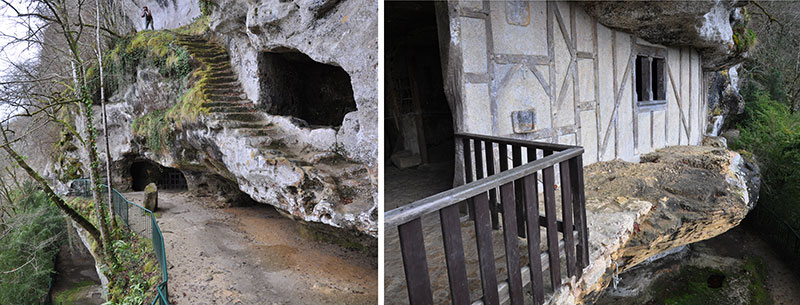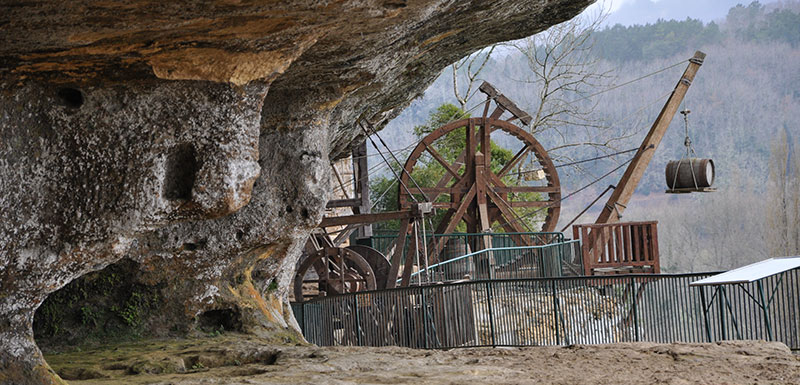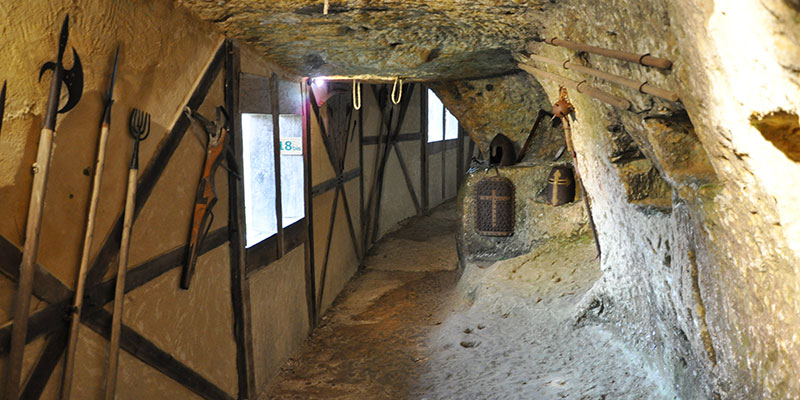The ancient pre-history of mankind is one of the great attractions of the Dordogne region and the center of that historical study is in this village of Les Eyzies.
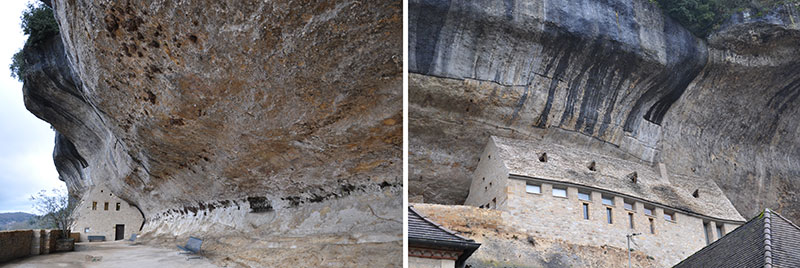
This is the home of the National Historical Museum, located above the village underneath an overhanging cliff. We will visit inside the museum, but first, we walk out through the pleasant little village and admire the natural outcrop and cliff running alongside and above it.
These cliffs and caves are one of the reasons why early humans and pre-human, our ancestors, were attracted to this area, as far back as 400,000 years ago, and the time of the Neanderthal man. The Ice Age came down through Northern Europe, the second Ice Age, and it was so cold that it forced these early human ancestors to travel south into this part of France for protection. And these caves provided natural homes for them.
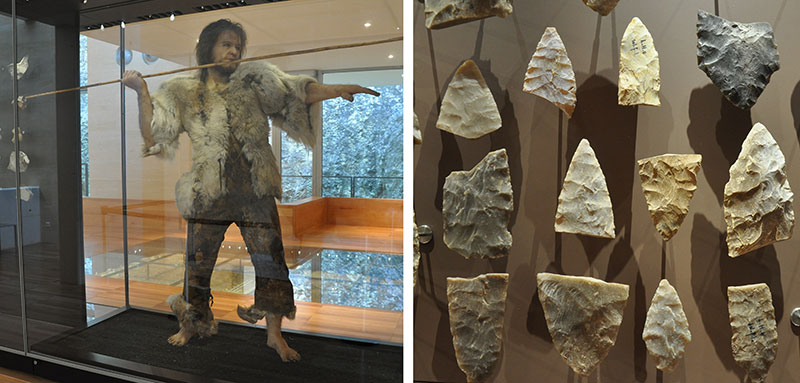
The Museum of Pre-history reopened in 2004, but originally built in 1918. It has one million objects in here that date back to the early Stone Age. They have wonderful exhibits that show you how the stone tools were crafted by the Neanderthal people and the earlier ancestors, the ancestors of Cro-Magnon man.
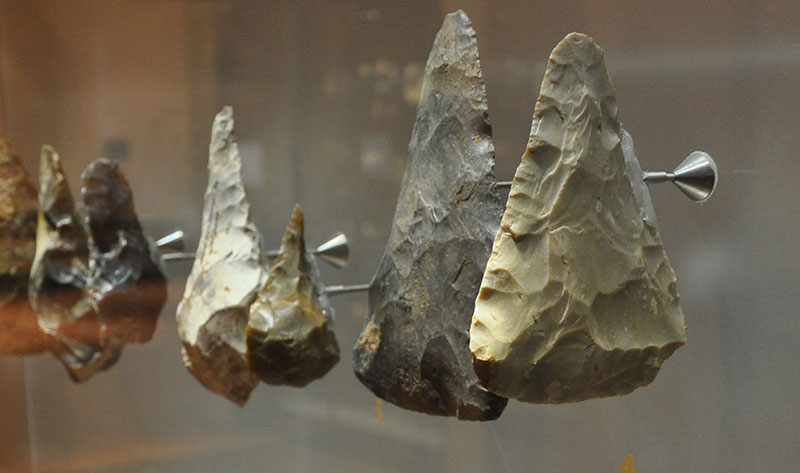
Cro-Magnon man was also found in this region. He's the earliest modern human, dates back to about 40,000 years ago. The various stone tools represent the different periods of Stone Age technology: the old Paleolithic, the Mesolithic, divided into different sections. They've got reconstructions of what some of the hunters looked like. The different historical periods were called, for example, Mousterian and Aurignation.
There's stone art here as well, some carvings in the walls and nearby are some painted caves, some of the earliest art ever created by mankind. So you can see how this rock shelter would have provided a natural home for these early humans. And the village nestled right down below it, Les Eyzies, is quite an attractive little village.
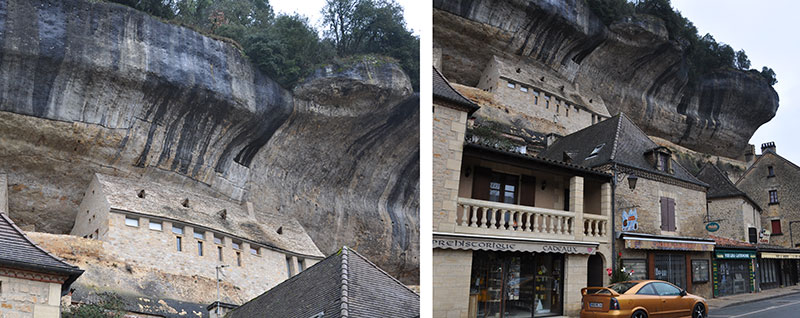
And there is a very informative tourist information office where an advisor told us all about the surrounding villages, and gave us some tips as to where to go driving and sightseeing.
"First is Font-de Gaume, and after can look for Combarelles and Cap Blanc. After, if you want, you can return here for visit the museum. Then enter the painted cave, Font de Gaume. And after the Vézère Valley with La Maison Forte, it's a castle. La Roque St-Christophe, it's a city of the middle age. And after you can go to la Cote de Jer for the point of view and return to Saint-Léon-sur-Vézère. If you have a time you can go to Fanlac, a small village. Yeah. Driving to Fanlac takes 30 minutes."
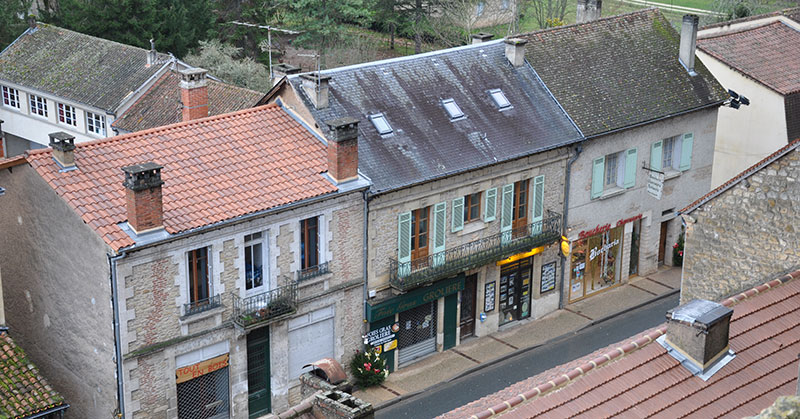
When you find a friendly local expert like this who is so helpful, it pays to follow their advice. Driving through these country roads in the off season was really a pleasure. There was no traffic and beautiful sites like this vineyard with a couple of castles beyond. Heading to the tiny hamlet of Fanlac. Here it is.
We'd never heard of it before. And you probably never have either. But the tourist office recommended we have a little detour. It's a couple of miles off the main road. And just have a look at this charming, little, peaceful country village. Homes made of limestone, slate tile roofs, surrounded by farmland, woods and vineyards. Very nice little spot, nice little detour.
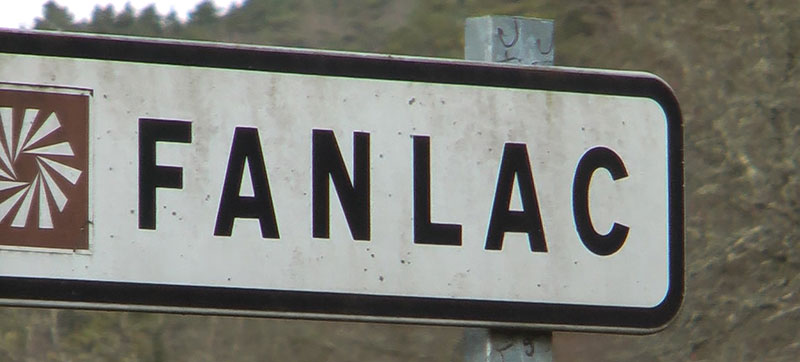
Just takes about one hour to drive up the little country lane. Have a look. Drive back down to the main road.
As we continue along, we're going to take another little detour, leaving the main road into a little side street to the village of Saint-Léon. This is another limestone village, slate tile roofs, a very peaceful, sleepy spot, indeed, most famous for its Romanesque church that dates back to the 11th century.
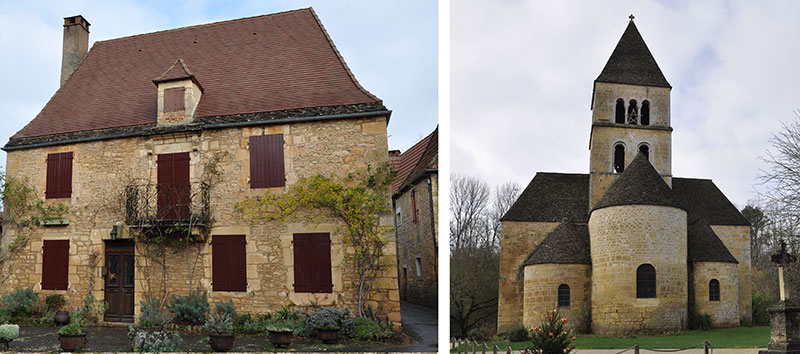
It's one of the finest of the Romanesque churches of the Perigord. The river Vézère flows through.

Saint-Léon is a very peaceful spot, a nice place to catch some fish, with a cat patiently waiting for his share. Yes, indeed, it's nice to get off the road and get away from the main sights and have a look at some of these little local villages.
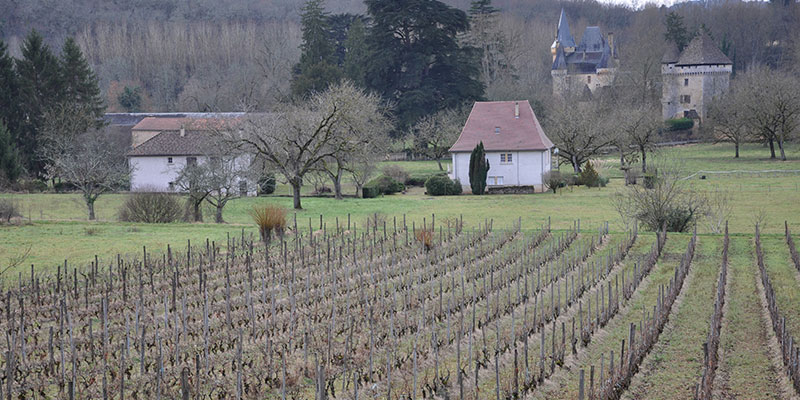
La Roque St-Christophe is yet another site with a lot of history. We're in the largest rock shelter in all of Europe. It has a commanding view out over the Vézère River Valley, and this overhanging rock shelter housed as many as a thousand people in the Middle Ages. And for 50,000 years before that, had human occupation, starting with the Neanderthals and perhaps even earlier.
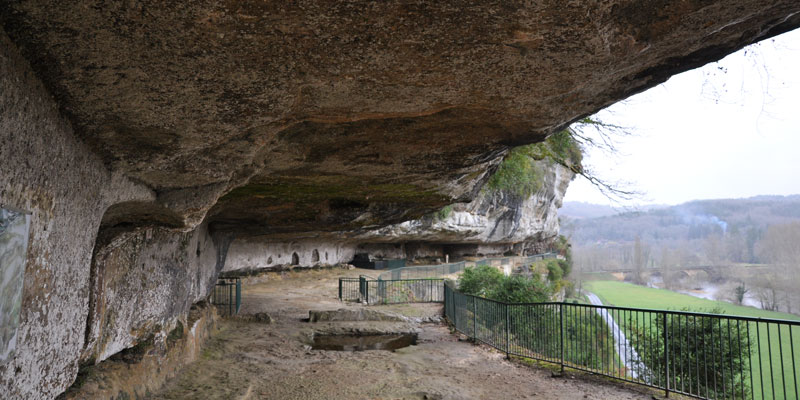
The main part of the rock shelter is about one kilometer long. This would have been their "downtown". In the Middle Ages it was a virtual cliff city. In this particular spot there would have been about 30 houses. They've done a fine job here, creating these small models and some reconstruction, showing you what the village was like in the Middle Ages.
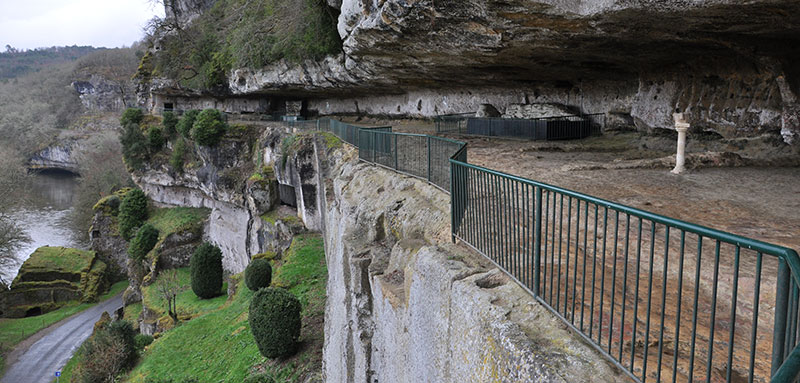
Of course, this was occupied many thousands of years earlier, way back in the time of pre-history, when it may have just been a simple open rock shelter, but in the Middle Ages, they made it into a complete covered village, occupying five levels of the cliff face. Really quite remarkable. And you get a feeling of the scale here. This is the largest, longest rock shelter terrace in all of Europe.

A kilometer long. About 6/10 of a mile. And you can see it would have been a well-defended spot. And yet they didn't have a source of water, so they had to haul all the water up, all the food, all the supplies. And these pulleys were built during the Middle Ages to supply the village with essential supplies. They've got their own blacksmith shop here and the tools are still in place.
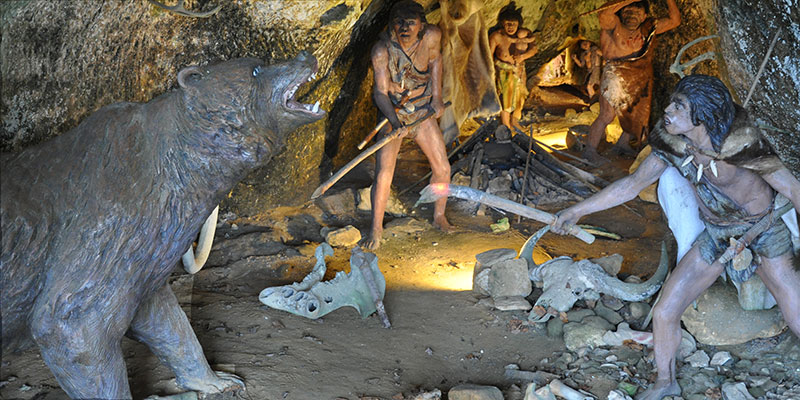
These are reproductions of the time period. There's a little barn, a chapel and different living areas set in this fantastic rock cliff setting. This is believed to be the oldest carved stone staircase in Europe. Here's a Bronze Age burial reconstruction, and the Neanderthals fighting off the bears in another vivid reconstruction here in this terrific rock shelter.
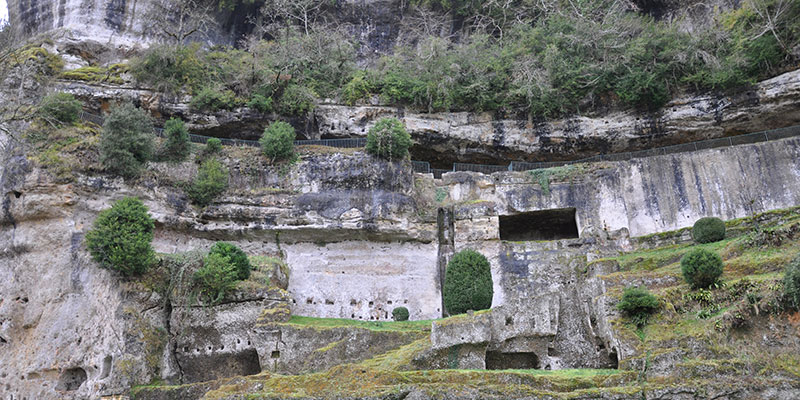
From below, you really get a feeling of the scale of this massive limestone cliff, riddled with caves and rock shelters.
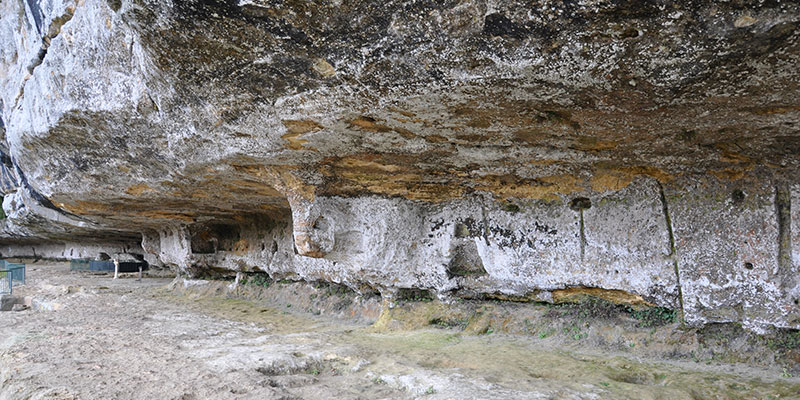
You purchase your ticket at the gift shop entrance and the staff there can tell you a little bit about the site. "Oh, it's a cliff. We have different periods of occupation: Neanderthal man was 50,000 years ago, followed by Cro Magnon. And they did archeological excavations. It's very special. Very special."
